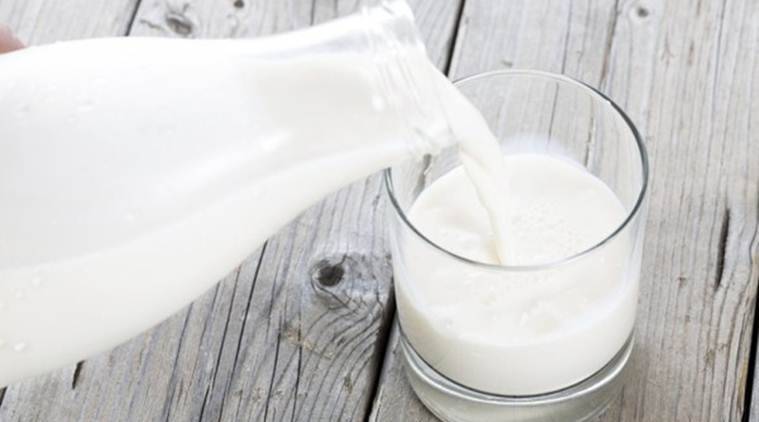 According to PGI’s Dr Deepak Bansal, Professor, Pediatric Hematology-Oncology Unit many factors are responsible for the high prevalence of nutritional anaemia in India.
According to PGI’s Dr Deepak Bansal, Professor, Pediatric Hematology-Oncology Unit many factors are responsible for the high prevalence of nutritional anaemia in India. The data compiled by National Family Health Survey 2019-11 (NFHS-5), the fifth in the NFHS series, showed a drop of nearly 20 per cent in cases of anaemia in children between the ages of 6-59 months from last year.
The NFHS compiles data on the population, health, and nutrition of India’s states and union territories, including district-level estimates. The fact sheet for Chandigarh, in the key indicators category of ‘Child Feeding Practices and Nutritional Status of Children’ shows that 54.6 per cent of children in Chandigarh aged 6 to 59 months are anaemic, an improvement from the 73.1 per cent recorded in the NFHS-4 survey. The percentage of women (15 to 49 years), who are anaemic is 60.3 and the percentage of anaemic men, in the same group, is 8.1.
Anaemia is a medical condition in which red blood cell count or the Hemoglobin (Hb) is less than normal and it is caused by a decrease in the production of red blood cells. The recommended level is 13.5 gram\100 ml in men and for women, it is 12.0 gm\100 ml. Anaemia, experts say, occurs when there are not enough healthy red blood cells to carry oxygen to the body’s organs, and the common symptoms are exhaustion, weakness, pale skin and dizziness. There are different types of anaemia, but the most common is iron-deficiency anaemia.
According to PGI’s Dr Deepak Bansal, Professor, Pediatric Hematology-Oncology Unit many factors are responsible for the high prevalence of nutritional anaemia in India.
Best of Express Premium
“Excessive milk intake is a major cause, especially in Punjab and Haryana. Milk consumption should not be greater than 500-600 ml/day in children between 1 to 5 years. The delayed introduction of complementary food is another factor. For children older than one six months, there should be an increase in the intake of solid food. Also, the diet is predominantly carbohydrate- (wheat, rice) based, with worm infestation another factor,” Dr Bansal said.
The most common age for the presentation of Iron Deficiency Anaemia (IDA) is 6 months to 2 years, and then in adolescence due to increased iron requirements for growth. Dr Bansal emphasised that iron supplementation has to follow a lifecycle approach as it starts in infancy and continues into the end of adolescence for boys and into adulthood for girls.
“As per Government of India guidelines, all children, four months to 19 years, should receive regular iron supplementation. The iron supplementation must be continued till 45 years for women,” he said.
Dr Sunil Agrawal, Senior Consultant Neonatology, Fortis Hospital said that when the level of Haemoglobin is less than 11, they term it anaemia. “Mild to moderate anaemia is a common problem in India. Though there has been an improvement over the years, we need to focus on the issue, a marker of nutrition, as nutritional anaemia is most common in this age group of children,” he said. Over-reliance on milk after six months of age is a major cause, as a child needs food rich in nutrition, and animal milk is a poor source of iron. Cereals, dalia, suji kheer, pureed vegetables, and khichdi are essential complementary foods that are rich in nutrition and a balanced diet is a key to good health.
“Glucose biscuits in milk do not provide nutrition and the mid-set of bottle feeding has to change. Also, 20 mg of iron tablet and syrup twice a week must be given to children. In some states, iron-fortified foods like wheat and rice are being provided. Like fortified iodine salt, these need to be promoted too,” Dr Agrawal said.
Dr Agrawal said that it is a misconception that iron tablets\syrups can cause constipation. “These are safe and do not lead to any Glycaemic Index (GI) disturbance.”
According to Dr Ramneek Bedi, Advisor to the World Medical Association and a paediatrician, in the first two years of childhood up to 50 per cent of the child’s brain is developed; in such a situation, if a child does not receive the right amount of iron, their growth and development can be affected. “Parents need to be aware of the nutritional needs of their children and not rely on myths.”
- The Indian Express website has been rated GREEN for its credibility and trustworthiness by Newsguard, a global service that rates news sources for their journalistic standards.

